As 80 South Street comes closer to a reality, New York YIMBY sat down to discuss the skyscraper with its chief architect, Anthony Morali. Mr. Morali is still fine-tuning the tower’s design—now set to rise 1,018 feet—but unlike the original Calatrava proposal, Morali’s iteration of 80 South Street seems like it will actually get built.
Q: In creating your vision for 80 South Street, did you draw on Calatrava’s old design?
I liked his design when I first saw it, I found it very interesting. I always like fragmentation—there’s attachment and detachment. It’s my own personal philosophy, but I believe in detachment, and that you can never really be attached to one single idea. Detachment and segmentation allow more creativity. In this instance, and in Calatrava’s, you have multiple things going on within each segment of the tower. So I like detachment, segmentation.
Q: What else inspired you, looking back historically?
I’m always fascinated by roof gardens, and I’m into green roofs and solar integration. Paul Rudolph designed a tower in China and every 10 floors he would break up the volume and create a space. I was also looking at Frank Lloyd Wright’s work, and his never-built Rogers Lacy Hotel was also an inspiration, from Broadacre City. The diagonals are key, and one of Wright’s sketches showed a spire—we’re actually considering adding some kind of spire element to 80 South Street as well.
In contemporary terms, Herzog & de Meuron’s 56 Leonard Street reminds me of Positano and the villages of Santorini. You know, you look at the square forms in those Italian villages, Greek villages, rising straight from the sea. That’s great design. So I drew on that as well.
What’s innovative about 80 South Street?
Now, we can say people are creating a new architecture. And we can say that new architecture is including, well—we’re starting to study sky gardens, sustainability, and solar is coming into play. New forms come into play, dynamic forms.
It’s taking the horizontal city—like townhouses, shops, gardens—and then flipping it on its side. In 80 South Street you have residences and hotel rooms, but you also have interspersed gardens that are much more dynamic than anything else today. This would be new.
Is the tower strictly residential? How close are you to securing financing?
Right now our zoning lot has a floor-to-area limitation of twelve for residential. We’re going to have a discussion with the neighbor in the back—we don’t need to take away from his commercial floor area, but if he agrees to sell, then we can make 80 South Street fully residential with limited commercial at the base. We’re having a meeting next week for that. For now, the tower is mixed-use hotel and residential.
For the hotel, we’re having great meetings right now. We had a very good meeting today, and we have a big meeting next week. We’ve also met with someone who’s doing a 300,000 square foot hotel in Times Square. So we’re coming close to securing a hotel tenant.
So if it’s residential, would you say it’ll be more Gehry or Herzog & de Meuron?
I would say it’ll be more in line with Herzog & de Meuron’s Tower rather than Gehry’s. I mean, our contractors—KBF and Gilbane—built Gehry’s building. These are the guys who will probably build this building, so they know how to build a tall building. But I would say yes, it’s more in line with 56 Leonard, also because Herzog’s tower works with those different terrace levels.
How has Sandy affected the design process?
Well the Federal Government raised the base sea level elevation—they call it the BFE—I mean, we were already at about four feet above ground. But for any habitable space, I think it’s going to go up to about eight or nine feet, so no habitable space can be below that at the Seaport. So basically what we’re doing is raising the level of our city.
Eventually, all of our connections—this is what I’m visualizing when you talk about raising the base plane to ten feet—we’re going to have to start a second level of our city. It’s almost like parts of Rome, where you can look down and see the ancient city twenty feet down. And now, there’s the new city. So, our city is becoming layered, and I think the new sidewalk for our new city is going to be approximately eight feet to nine feet above, and that’s going to create a plane of existence.
80 South Street will integrate that potential for a new plane, and who knows—maybe we’ll have elevated walkways between our tower and 151 Maiden Lane next door. And then maybe more neighbors will join in. Creating a new plane opens a ton of opportunities. Why not have the High Line—or something like it—wrap all the way around Manhattan?
So you think Sandy will have major & long-lasting ramifications for Lower Manhattan?
Everyone’s talking about ‘I’m going to put up a damn and I’m going to fight the water,’ but for me it’s that you don’t fight—let it come in. As far as I’m concerned, I would have canals going all the way through the island with guys on little gondolas, and then I would put my second city on top and we’d all have our walkways up above, and it would be totally romantic and fun.
Tentatively, when would you expect 80 South Street to be finished?
It’s coming close. Nothing is certain, but things are coming together. 2016 is a rough deadline for now. Cord Meyer is on board, so we’re very excited. We’ll have renderings coming out in the next few weeks and we’re about to get a model built, so it’s definitely moving along.
Subscribe to YIMBY’s daily e-mail
Follow YIMBYgram for real-time photo updates
Like YIMBY on Facebook
Follow YIMBY’s Twitter for the latest in YIMBYnews

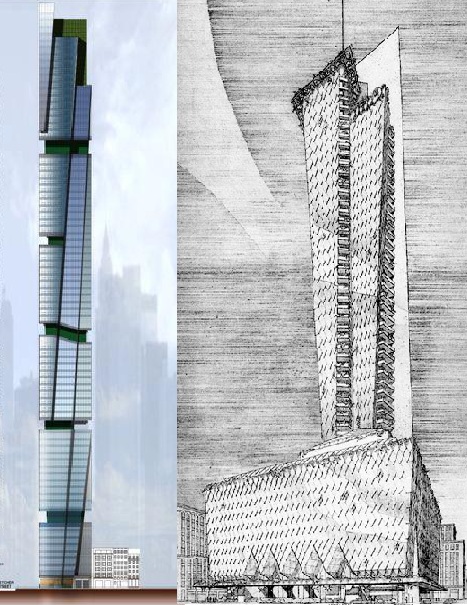
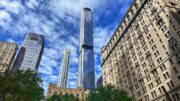
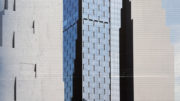
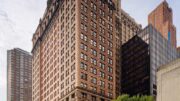
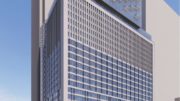
Wow great interview NY Yimby. You asked some great questions and his answers were very informative. This project is sounding more and more likely by the day